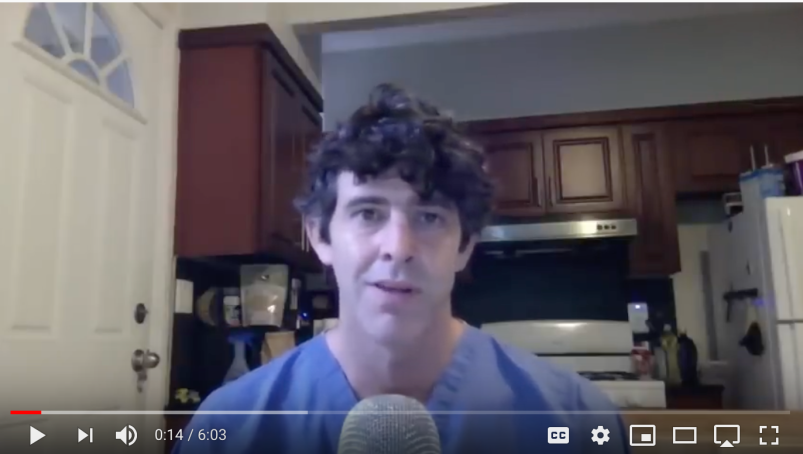This appears potentially quite important. Since it has to do with technical clinical details and treatment protocols I’ll try to be both as precise and general as possible. Yesterday I noticed this grainy youtube video posted on March 31st by a New York City emergency and critical care physician, Cameron Kyle-Sidell. Kyle-Sidell said that he thought the treatment protocol and basic understanding of acute COVID-19-induced respiratory distress were both wrong. He said that what he is seeing in his ICU does not look like pneumonia but rather oxygen deprivation (hypoxia). Thus the treatment shouldn’t be focused on high pressure for someone whose lungs aren’t able to function but rather more effective ways of delivering additional oxygen. Critically, he argued that the high pressure ventilation might be damaging the lungs. He also said his impressions were based both on his ICU work over the previous two weeks and conversations with other clinicians around the country.
I looked up Kyle-Sidell and he’s a real doctor in emergency and critical care. That checked out. So far so good.
The responses to his videos on social media, both pro and con, suggested he was saying that the COVID-19 virus wasn’t the cause of the sickness or that ventilators weren’t necessary. I listened closely. That was clearly not what he was saying. He was saying that the disease model most doctors are working with – pneumonia/ARDS – is not what these patients are presenting with and the treatment protocol is not suited to their disease.
He was cautious and tentative in his conclusions, just what you’d expect from a serious clinician. His argument was that it is a different syndrome requiring different treatments. Ventilators are the best treatment we have now, he said, but they should be used differently (different use of pressure, settings, all well beyond my understanding). It seemed legit. But obviously I have zero understanding about anything to do with respiratory disease or its treatment.
For all those reasons I was intrigued but didn’t write anything about it, though I was eager to hear from other clinicians who might be able to evaluate what he was saying.
I’m writing about it now because of this article I saw in Medscape, a publication for clinicians and researchers (you need to sign up for access but it’s free). The article discusses Kyle-Sidell’s findings along with others thinking along similar lines. There was also this interview which Dr. John Whyte, chief medical officer at WebMD, did with Kyle-Sidell discussing his ICU observations. So serious, credentialed people are taking this seriously.
The Medscape article notes that the American Journal of Respiratory and Critical Care and Intensive Care Medicine are publishing, respectively, a letter and an editorial by Dr. Luciano Gattinoni of the University of Gottingen who makes a similar set of observations and recommendations to those in Kyle-Sidell’s videos. Gattinoni’s findings were based on his and his colleagues clinical experience in Germany as well as discussions with doctors in northern Italy.
From Medcape …
In the editorial, Dr. Gattinoni and his colleagues explained further that ventilator settings should be based on physiological findings — with different respiratory treatment based on disease phenotype rather than using standard protocols.
“This, of course, is a conceptual model, but based on the observations we have this far, I don’t know of any model which is better,” he said in an interview.
Anecdotal evidence is increasingly demonstrating that this proposed physiological approach is associated with much lower mortality rates among COVID-19 patients, he said.
While not willing to name the hospitals at this time, he said that one center in Europe has had a 0% mortality rate among COVID-19 patients in the intensive care unit when using this approach, compared with a 60% mortality rate at a nearby hospital using a protocol-driven approach.
Here is Kyle-Sidell’s first video from March 31st. He’s subsequently published two more. You can see why my initial impulse would be caution.
Given the discussion that this is getting from peer-reviewed publications and the write-ups in Medcape, I feel comfortable that this is at least a legitimate question and discussion, whether or not it ends up producing better treatment protocols for the treatment of COVID-19. While Kyle-Sidell’s videos were the first I’d heard about this approach or theory emerging from the New York City crisis it seems like at least some physicians in Europe have come to similar conclusions.






